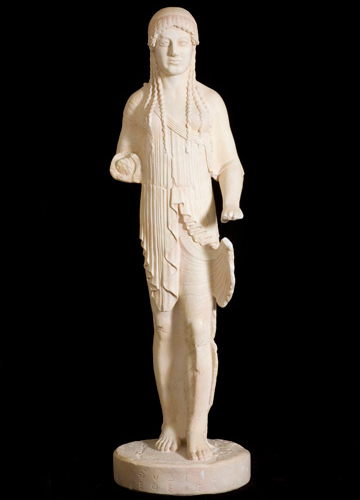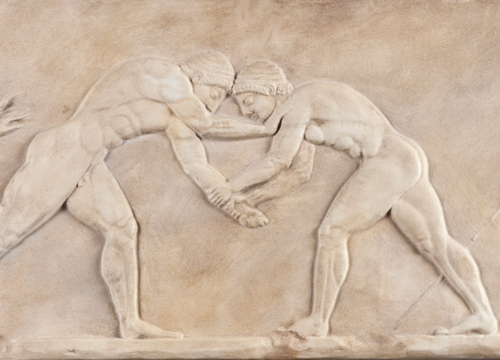In ancient Greece, an Acropolis was the highest part of the city and represented the seat of power for a ruler, city state, or deity. Since the Neolithic period (4000-3100 BCE) the rocky hill of the Acropolis in Athens has been sacked or destroyed by war, occupied by invaders, and rebuilt many times. Most well-known today for its famous Classical Greek temple, the Parthenon, it was also home to a mosque, a Christian church, and a gunpowder store at different times in its history.

The Acropolis

View of the eastern portico of the Parthenon in the 'Antiquities of Athens', 1787
The Antiquities of Athens, Volume 2, 1787
James Stuart, Nicholas Revett and James Basire, London: Printed by J. Haberkorn, 1762-1830
Macmillan Brown Library Rare Books Collection, University of Canterbury
Bib# 1322381
This architectural plate from the series 'The Antiquities of Athens' shows a view of the eastern portico of the Parthenon.
In the interior of the temple it is possible to see the domed mosque built after an ammunition dump on the site exploded in 1687.
In 1833, after the Greek War of Independence ended, the Acropolis became an archaeological site and many of the modern structures were removed. From then the layers of the life of the Acropolis have peeled away, and excavations have revealed the treasures of the Athenians buried beneath the bedrock.
Plaster cast of the Euthydikos kore
After an original in the Athens Acropolis Museum (Inv. 686), c. 490 BCE
Purchased, 1989
JLMC CC14
This kore statue is one of many found buried in rubble on the Acropolis. Her torso was excavated from deposits along the Periclean South Wall, east of the Parthenon in 1882. It was not untill 1886 that an inscribed base was discovered near the Kore-pits. A year later the two pieces were discovered to be parts of one statue.
After Persian forces sacked the city in 480 BCE, the Athenians returned to their Acropolis to bury the relics left behind by the invaders. They then levelled the site and rebuilt their sacred temples.

JLMC CC14, Cast of Euthydikos kore
Burying the statues served to preserve cultural beliefs, and led to the preservation of artefacts that, had they been left exposed, would not have endured the hardships of the Acropolis over time.

JLMC CC10, Close-up of a cast of a bas-relief
Plaster cast of a bas-relief
After the original in the National Archaeological Museum, Athens, c. 510 BCE
Purchased, 1989
JLMC CC10
In 478 BCE General Themistocles rallied the Athenians to hastily rebuild their city wall after the withdrawal of Persian forces. In their haste, foundations from many monuments were incorporated into the wall.
The historian Thucydides recounts that no public or private structure was spared. In time, the wall slowly sunk into the earth alongside other archaic sculptures that had been buried within the Kerameikos necropolis (cemetery).
In 1922 when excavating the Wall of Themistocles, a statue base was found decorated with reliefs showing images of male athletic pastimes. It was found in the lowest elevation of the wall, south of the Piraeus Gate in Athens. The base would have belonged to a dedicatory statue or kouros within the necropolis, who would have been commissioned by a wealthy individual to commemorate a youth’s grave.